Content Marketing Tips for Brands in 2022

As a content marketer, do you ask yourself, what am I going to do this year that’s different and better than last year? How am I going to provide value to my audience? How am I going to transform the way they interact with my brand?
Aside from the quantitative results we uncovered in our Content Matters 2022 Report around how content marketers are addressing these questions, we’d also like to highlight some more qualitative trends and share some content marketing tips to help you stay ahead.
In 2022, content marketers plan to produce immersive and interactive online experiences that will impress, entertain, and delight their audience. Their content strategy will be geared toward customers’ values and shaped by first-party data. By taking advantage of advancing technology, marketers will increase engagement and reach their marketing goals.
Here’s how to keep up with these trends.
- Step into the audience’s shoes
- Shape unique online experiences
- Take advantage of AI and machine-generated content
Step into the audience’s shoes
In 2022, marketers will focus on personalized user experiences. Two common themes that consumers expect from their brands are authenticity and inclusion. Customers seek sincerity from brands, while brands seek deeper and more well-rounded relationships with their customers. This sincerity-seeking has been coined the “Ted Lasso” effect.
If you want happy customers, you should be thinking about how you can show customers you care about them even when you’re not selling to them. Fostering genuine curiosity about your target consumers will help you develop a brand strategy that speaks to your audience.
Make it diverse and inclusive
Customers want content that is diverse and inclusive. In a survey conducted by Top Design Firms, they discovered that only 29% of non-white people feel they are accurately represented in ads, as opposed to 40% of white people. Moreover, the frequency of representation is also significantly lower for non-white people.
Making sure a customer can see themselves as a loyal member of your brand can help increase conversions. Seventy-three percent of people ages 18-34 rated themselves as somewhat likely to make an immediate purchase after seeing a diverse ad. And the majority of those surveyed (67%) said they would be at least somewhat likely to make a second purchase from a brand that commits to diversity and inclusion.
The online dating application Bumble does a great job of creating diversity in their ads. By highlighting diverse members of the New York community who use or have used Bumble in the past, Bumble speaks directly to their broad audience.
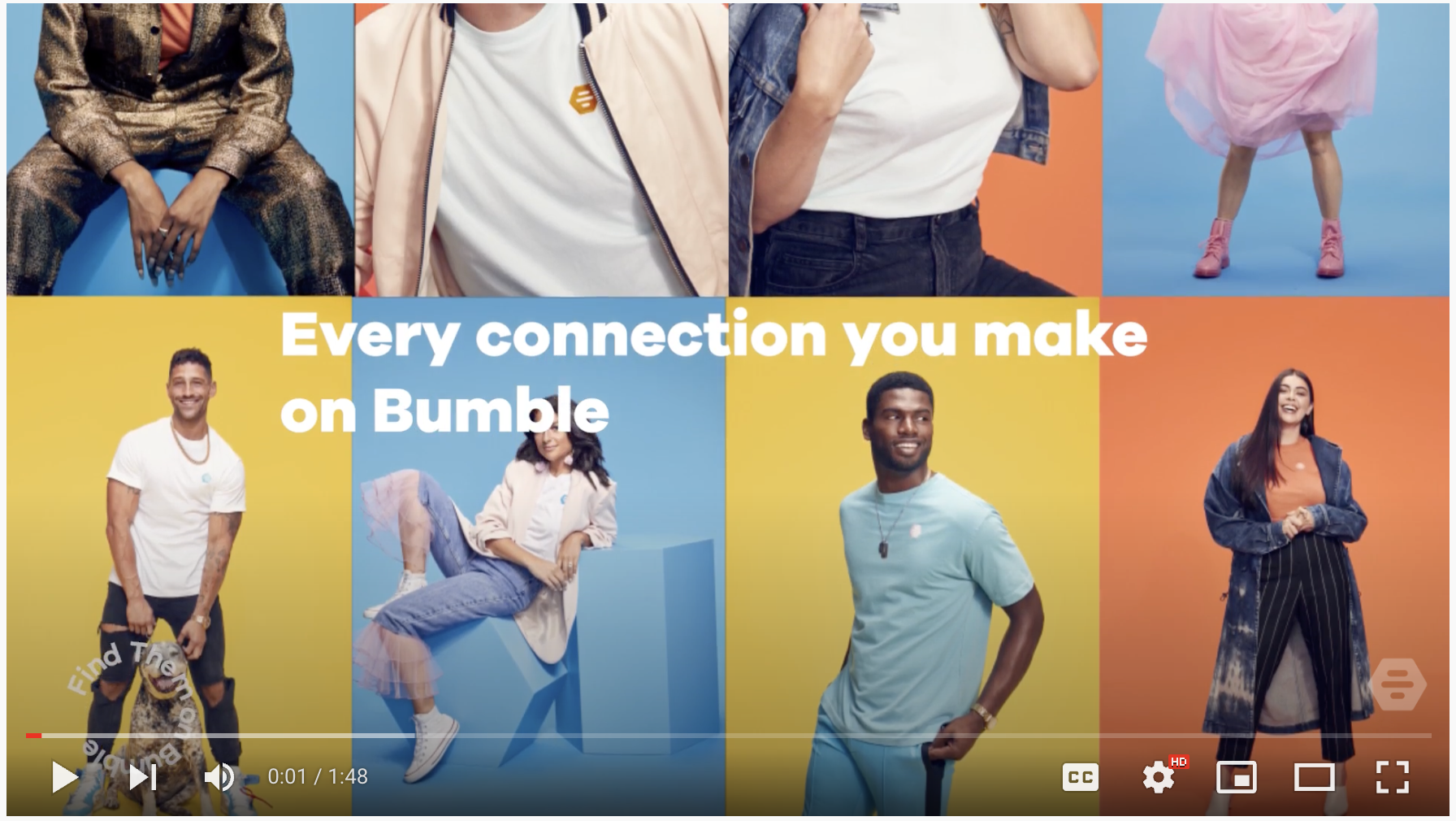
Integrate corporate social responsibility
Customers also value companies that use their power and influence as part of the corporate world to do their part in improving society. Marketers recognize the importance of corporate social responsibility and plan to integrate it into their marketing strategy in 2022.
Digital marketing and advertisements account for roughly .08% of total greenhouse emissions. One of the ways marketers can make their efforts more sustainable is by working with a company like Good-Loop, whose mission is to make ad tech more ethical. For every ad a customer engages with, the advertiser makes a free donation. Good-Loop also created a “Green Ad Tag” to measure and track the carbon costs of digital ads.
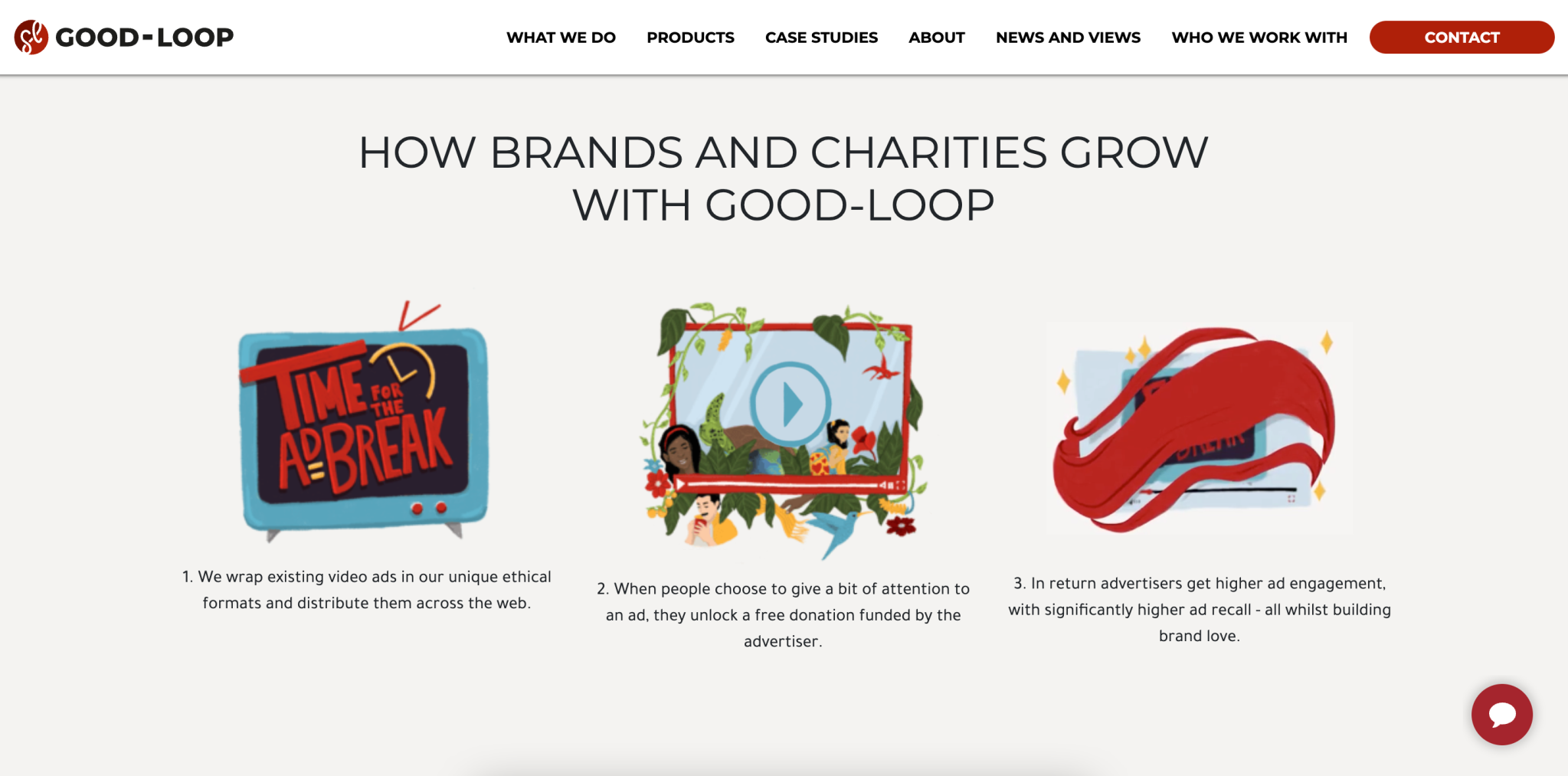
Develop content for voice search
Think with Google shared that 27% of the global population uses voice search on mobile. As voice search becomes more popular, your content should be optimized for how people speak. This means writing with natural language and rich snippets that pose content as a question and use colloquial terms.
Optimizing for voice search can help improve your SEO and increase your audience engagement. In 2022, marketers should consistently maintain updates to information on their Google business listings and e-commerce stores. This will allow AI-powered devices to accurately find and relay answers to location-based voice search queries.
Shape unique online experiences
When competing for attention, providing your audience with unique online experiences on social media and beyond can help you stand out.
Be strategic with UGC and pop culture
In 2022, consumers will continue to seek out brands that are culturally relevant. Both pop culture and user-generated content (UGC) must strike a balance between entertaining and providing value to your audience. Marketers that incorporate pop culture trends into their content marketing strategy will challenge themselves to better understand their audience, increase their chances of gaining traffic, and humanize their brand.
LaCroix is a brand that has maintained a consistent brand image while still using UGC. Their Instagram page is full of vibrant colors, big smiles, and beautiful landscapes. By providing loyal fans with merchandise and swag items, LaCroix enables them to capture moments that fit perfectly with the brand’s image. LaCroix has even gone as far as creating interactive displays for fans to engage with and use as backdrops for their photos.
MoonPie’s Twitter account is the perfect example of how to use humor and pop culture to humanize a brand and connect with your audience. In early 2021, the famous Bernie Sanders meme went viral. As a result of this trend, MoonPie tweeted a screenshot of a conversation between MoonPie’s social media manager and their boss. In the text, the boss asks the manager to do a Bernie meme about MoonPies. The manager’s response was humorous and surprising, which made MoonPie as a brand even more relatable.
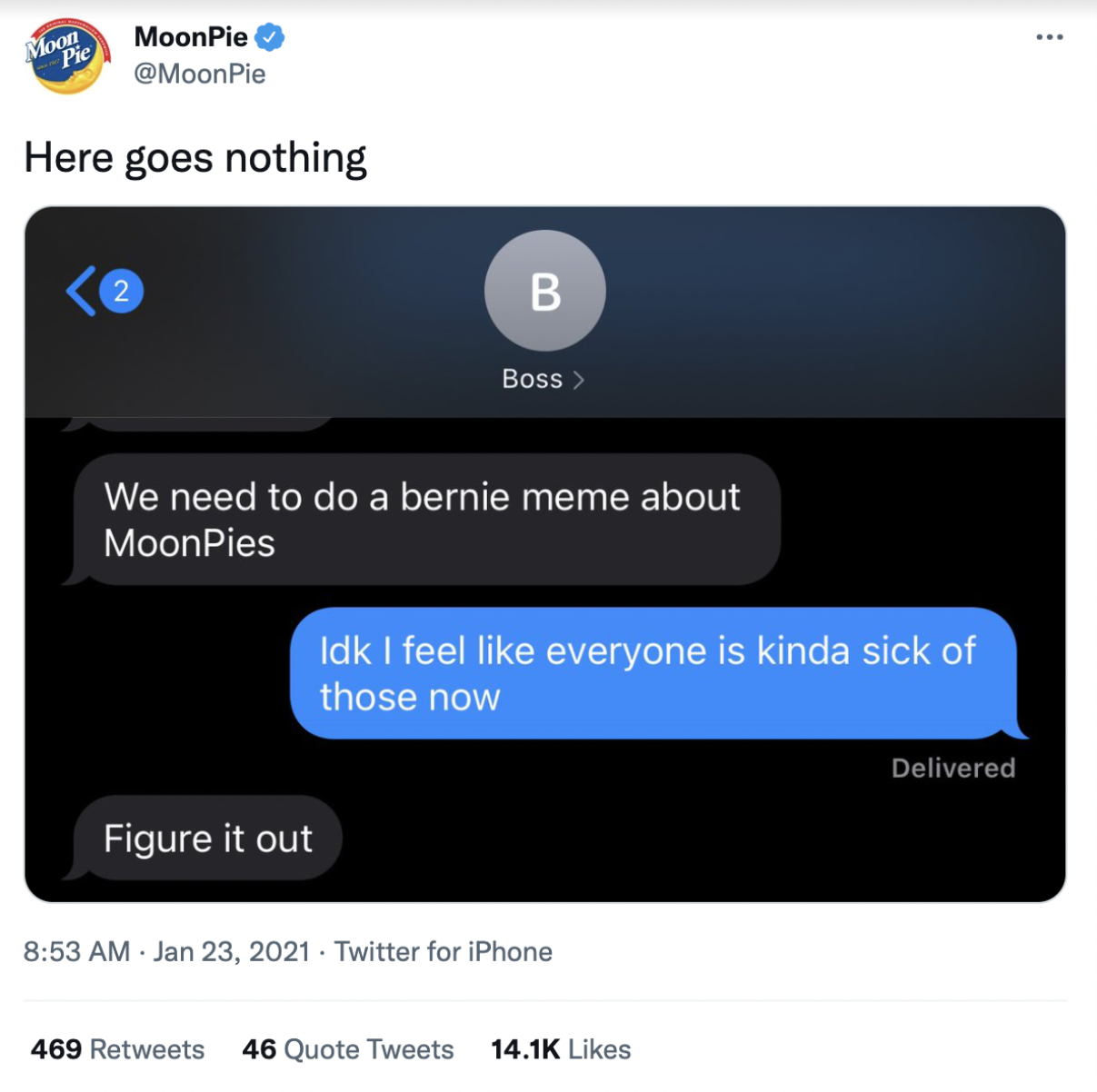
Focus on short-form video and podcasts
Video and podcasts are still on an upward trend for consumers. According to the Salesforce State of Marketing study, in 2021, video showed the biggest increase in value. The study shares that “nearly two-thirds of organizations use audio media like podcasts and streaming ads.” We also found in our Content Matters 2022 Report that video is the no. 1 content format marketers want to create this year.
A significantly higher portion of online users (80%) will watch a video instead of reading content (20%). Video is already used by 86% of businesses as a marketing tool. But in 2022, 30% of marketers plan to invest in short-form video, and 33% will be doing so for the first time.
Podcast listeners have grown by 29.5% over the last three years, and Spotify is now the most popular app to listen to podcasts on. Spotify also provides tips for promoting your podcast and gaining exposure.
However, there are apps like Callin that are taking a new approach to podcasting. On Callin, podcast hosts record their podcast with a live audience. This allows listeners to ask questions and engage with the hosts while they record.
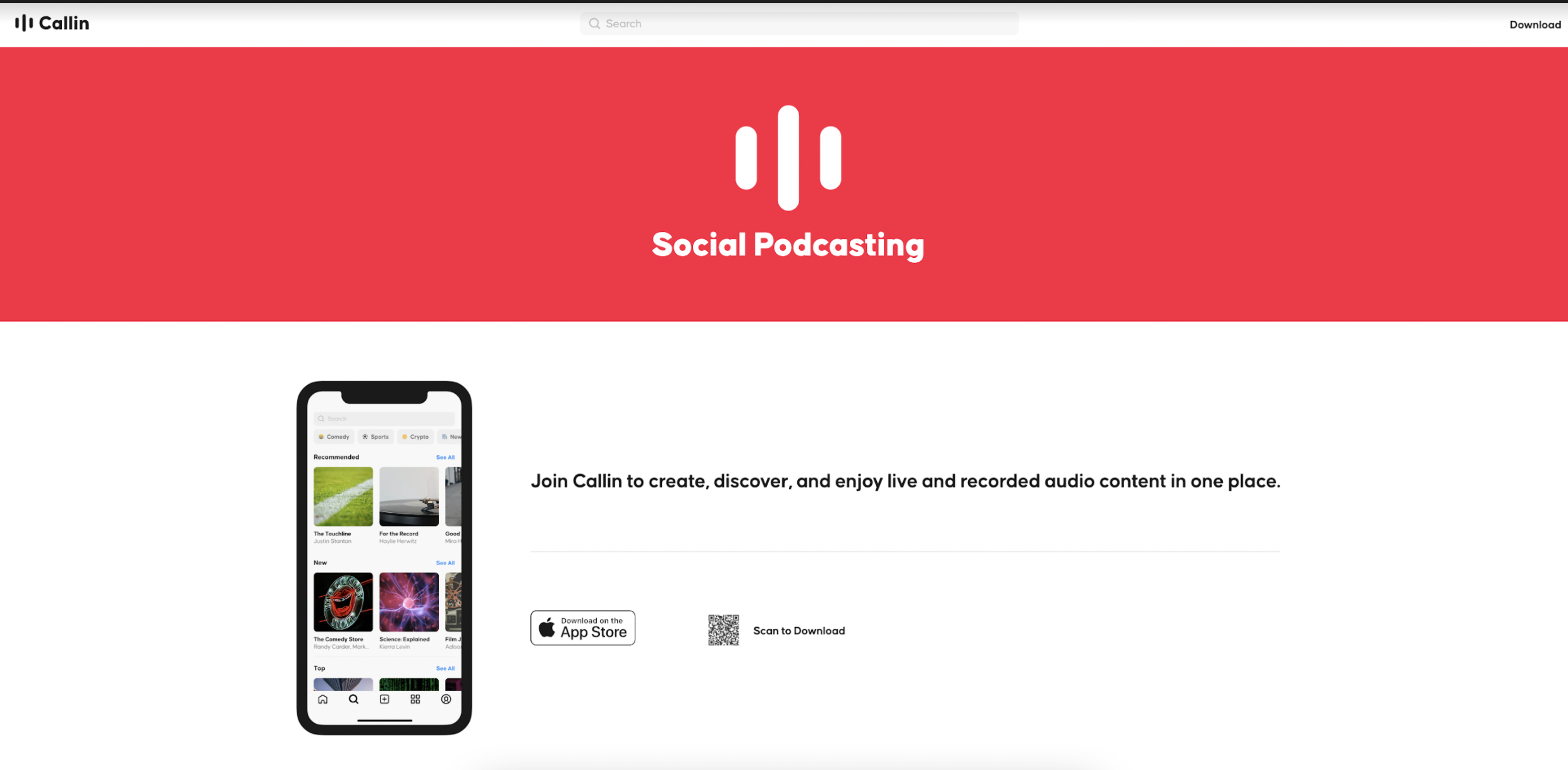
Capture attention with interactive content
In 2022, audiences are more likely to pay attention to immersive, interactive content. Marketers will trend toward presenting content in formats like image sliders rather than static content like PDFs. Research shows that the majority of marketers (93%) agree that interactive content is more effective than static content.
Minisites, or microsites, are a great way to build a more focused and interactive experience outside of your main website. They are also an opportunity to test new ideas, collaborate with partners, and boost SEO.
Hyperakt, Collaborative Fund, and Startup America Partnership joined together to create a microsite that advocates for car sharing. As you side-scroll through the page, you “drive” a car along an interactive infographic. Users are simultaneously entertained and educated as they drive through a whimsical road with varying landscapes and structures along the way.
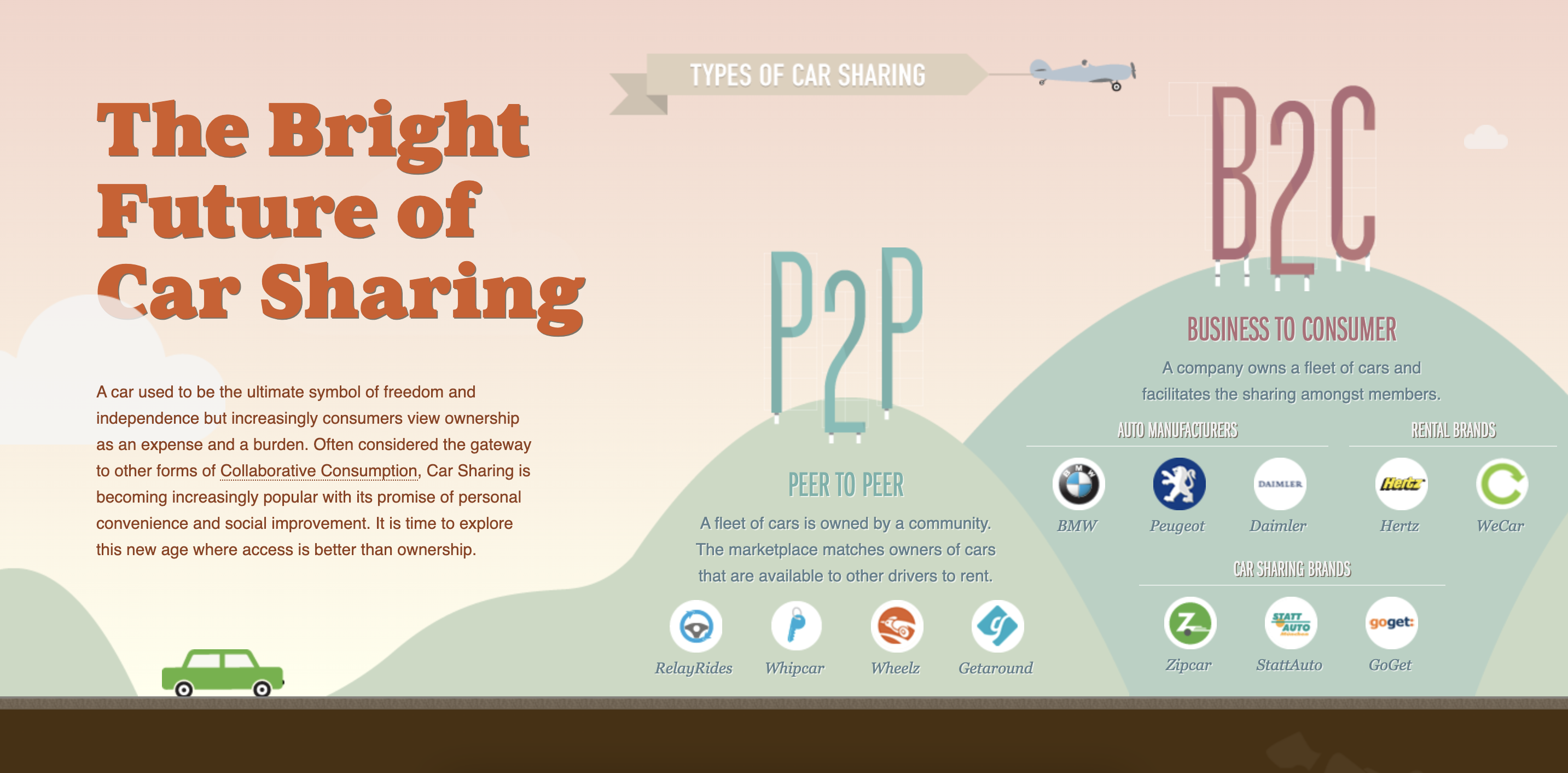
Another great example of interactive and collaborative content is the Music in Color project and collaboration between Behr Paint, Katy Perry, and Spotify. This color selector tool helps users discover personalized paint color recommendations based on their favorite songs on Spotify. The user enters a name of a favorite song or artist, selects the song, and receives a color suggestion from Behr Paint’s library.
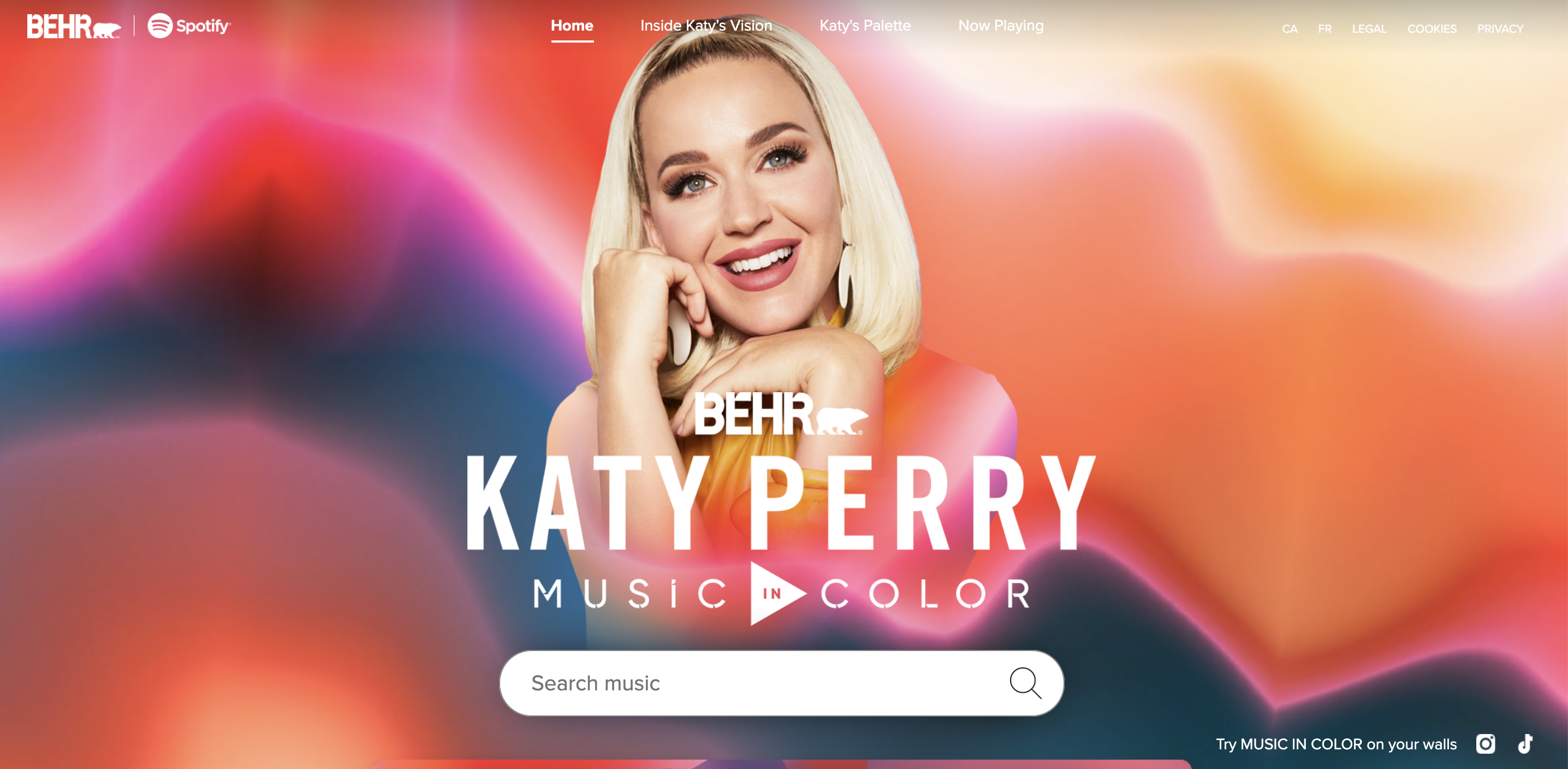

When searching for “La vie en rose” by Edith Piaf, the selector tool suggested the Behr paint color Honied White.
Integrate advances in technology
In 2022, content marketers will use technology designed to assist in their marketing efforts to save time and increase engagement and conversions. Eighty-three percent of marketers expect their work to be more technology-driven in order to meet customer expectations. As digital technology evolves, customers’ needs evolve, and so, digital marketing follows suit.
Take advantage of AI and machine-generated content
AI can act as a tool that works alongside content marketing needs, saving marketers time and money. AI can take over for tasks that are repetitive, data-driven, and predictive. If you haven’t yet taken advantage of AI capabilities, you’re not alone, as the vast majority of marketers are only just beginning to integrate AI into their work. Moreover, “sixty percent of customers are open to the use of AI to improve their experiences.”
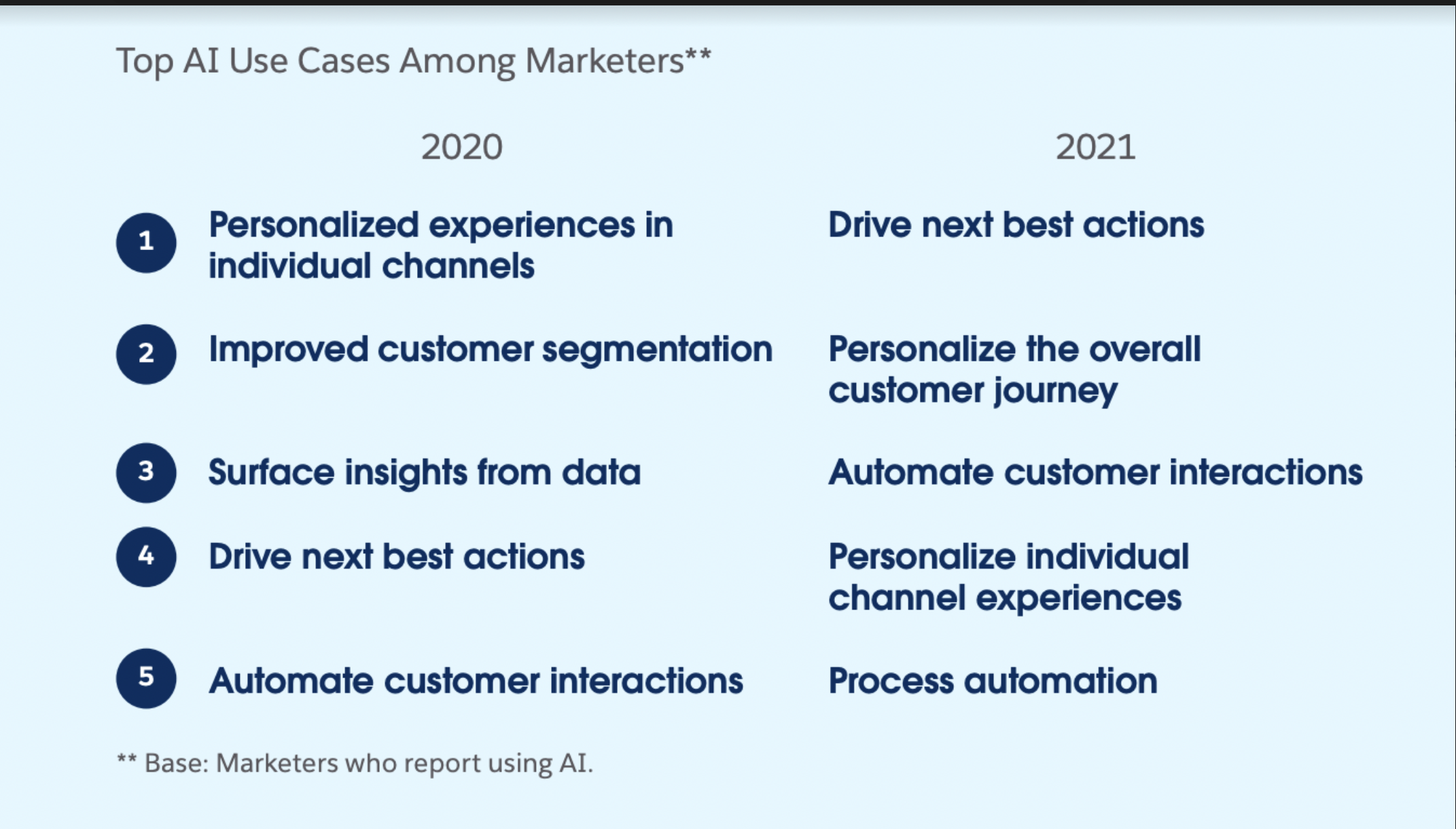
Salesforce’s State of Marketing study indicates the top AI use cases among marketers.
AI tools like Writer help content marketers maintain their brand voice and tone as team members write content. AI can also help automate and repurpose content. Whether you want to convert text to video or break down your content into smaller pieces through a “content atomization” process, AI will help marketers do it more efficiently.
If you’re zapped out of ideas, Crayon, a competitive intelligence software, helps marketers come up with new ones. If your marketing strategy could use an SEO boost, look to MarketMuse’s AI and machine learning for content marketing strategies and recommendations.
As VR and AR become more popular on platforms like Facebook’s Metaverse, customers will be looking forward to their favorite brands joining the space. In 2022, marketers will use AI to create personalized content that lives within that world. From VR online shopping to fitness and health programs, the exploration of the marketing potential of this realm is just beginning!
Shift analytics to first-party data
By the end of next year, Google’s third-party cookies will be gone, making first-party data and experimentation a priority for marketers. The change to increase consumer privacy will motivate brands to find ways to market their products and services in a way that is more respectful to the consumer.
First-party data is often more trustworthy and provides more valuable information to businesses. It also has the highest ROI compared to second- and third-party data as it tends to be free and accurate.
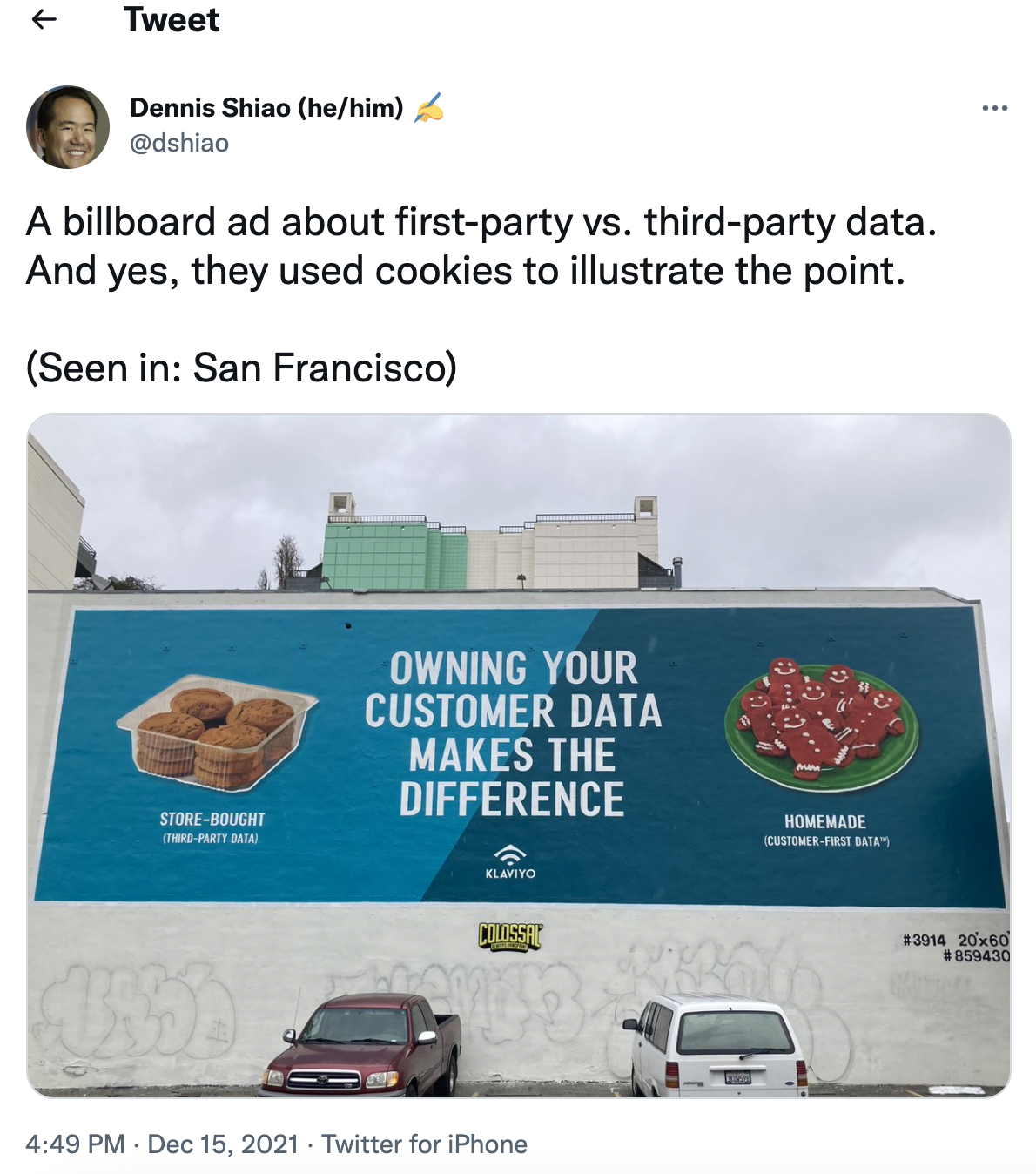
In 2022, using a tool like Parse.ly to analyze your content performance will give you easy access to your first-party audience data, so you can implement a variety monetization strategies to maximize the ROI on your content.

Build a stronger brand identity to align with tomorrow’s content marketing trends
The successful marketers of tomorrow know that brand identity is the foundation of all marketing efforts. The stronger your brand voice, the more focused you are on making your brand stand out.
Consumers are looking for inclusive, responsible, and personalized content experiences and a strong brand voice from the companies they buy from, and marketers need to deliver. Take advantage of technology to simplify and automate your work where you can—in creating videos, personalizing content on a user-by-user basis, or collecting and analyzing first-party content data.
Want to learn how Parse.ly can help you take advantage of your content data to create powerful and impactful content?